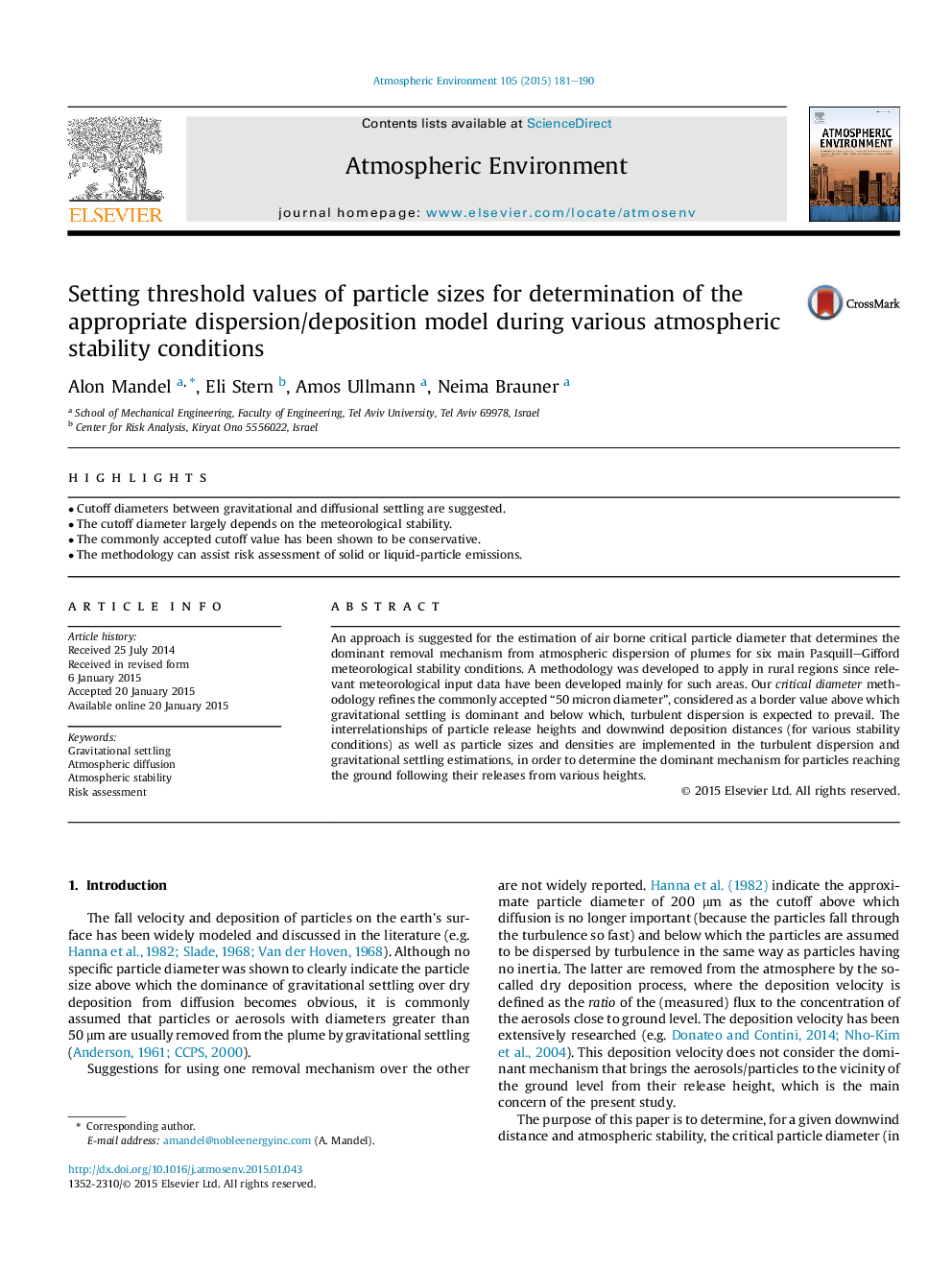| Article ID | Journal | Published Year | Pages | File Type |
|---|---|---|---|---|
| 6338687 | Atmospheric Environment | 2015 | 10 Pages |
â¢Cutoff diameters between gravitational and diffusional settling are suggested.â¢The cutoff diameter largely depends on the meteorological stability.â¢The commonly accepted cutoff value has been shown to be conservative.â¢The methodology can assist risk assessment of solid or liquid-particle emissions.
An approach is suggested for the estimation of air borne critical particle diameter that determines the dominant removal mechanism from atmospheric dispersion of plumes for six main Pasquill-Gifford meteorological stability conditions. A methodology was developed to apply in rural regions since relevant meteorological input data have been developed mainly for such areas. Our critical diameter methodology refines the commonly accepted “50 micron diameter”, considered as a border value above which gravitational settling is dominant and below which, turbulent dispersion is expected to prevail. The interrelationships of particle release heights and downwind deposition distances (for various stability conditions) as well as particle sizes and densities are implemented in the turbulent dispersion and gravitational settling estimations, in order to determine the dominant mechanism for particles reaching the ground following their releases from various heights.
